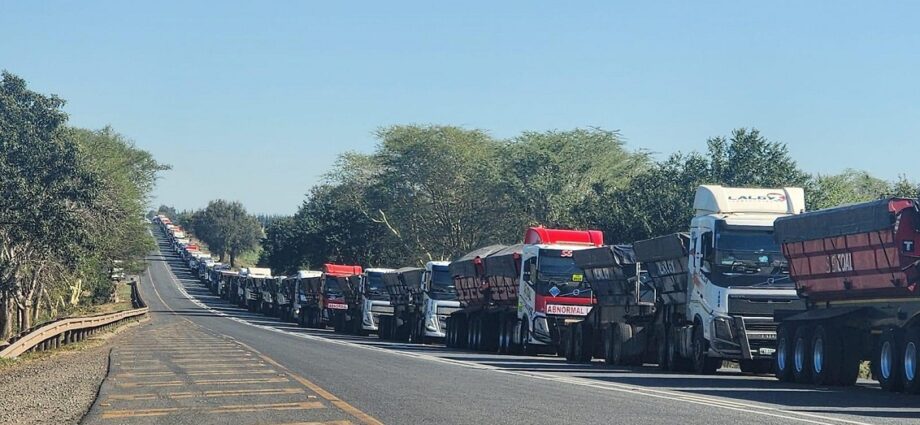The Border Management Authority (BMA) has intervened at the Groblersbrug border post between South Africa and Botswana to ease the prolonged delays affecting transporters of dangerous goods (DG) and fast-moving consumer goods (FMCG).
Transporters had raised concerns about excessive wait times at the DG truck park near the border, with some operators reporting delays of up to six days. One fuel carrier told the Transit Assistance Bureau (Transist) that, at one point, 19 of his trucks were stuck waiting to cross the Limpopo River.
The congestion stemmed largely from the DG truck park being used for all types of cargo—dry bulk, general freight, and not just hazardous or refrigerated loads, as originally intended. According to Mike Fitzmaurice, Regional Vice President of the African Union’s Organisation for Transport and Logistics, this misuse of the facility led to severe bottlenecks.
“The truck park is supposed to prioritize DG and FMCG cargo, but its owners are clearly seeking to maximize profit by allowing all freight types in,” he said. Poor queue management, particularly when trucks exit the park, worsened the situation.
Fitzmaurice emphasized that trucks carrying hazardous materials and perishable goods—especially those operating under the South African Revenue Service’s Authorized Economic Operator (AEO) Programme—should be given priority. “If you have a green lane system, it should start before the border. There must be a tangible benefit for pre-cleared cargo carriers,” he added.
Customs initially declined to assist in managing the traffic, claiming they could only intervene once AEO cargo reached the control zone—an explanation that drew criticism from industry stakeholders.
In response to growing complaints, the BMA confirmed it had partnered with its Botswana counterparts to implement measures for faster clearance of DG and FMCG freight. “Tankers carrying diesel and other dangerous goods are now exempt from standard queueing procedures, provided their cargo is declared through SARS’s pre-clearance system,” said BMA Deputy Assistant Commissioner for Marketing and Communications, Mmemme Mogotsi.
Law enforcement bodies, including the Cross-Border Road Transport Agency and traffic police, are now assisting with queue management and ensuring hazardous freight receives appropriate priority. Mogotsi assured, “We are doing our best to expedite the clearance of all cargo, particularly dangerous goods, at the port.”
Initial improvements have begun to show. One transporter reported that Customs officials had started pulling DG trucks out of the queue to fast-track processing. However, many stakeholders believe a more systematic solution is needed to handle increasing traffic volumes through Groblersbrug.
A proposal to divide the queue—separating pre-cleared AEO trucks from non-compliant operators—has received mixed feedback. Some clearing agents argue that physical limitations at the border make this impractical and may spark complaints of favoritism. However, trade facilitators say such a system, if managed properly on-site, could be replicated at other busy border posts.
Meanwhile, transporters carrying dry bulk commodities like wheat have expressed concern about being left out of the prioritization system. One driver highlighted how long delays at Groblersbrug are damaging his cargo: “We transport wheat to Zambia. During the day, high temperatures cause condensation under the tarps, and at night it cools down. If we’re stuck in the queue for three to six days, the wheat starts to sprout—and by the time we get to the mills in Zambia, they often reject it.”
While the recent prioritization of DG and FMCG freight is a positive step, transporters are calling for broader reforms to ensure all cargo types are fairly and efficiently processed at the border.




